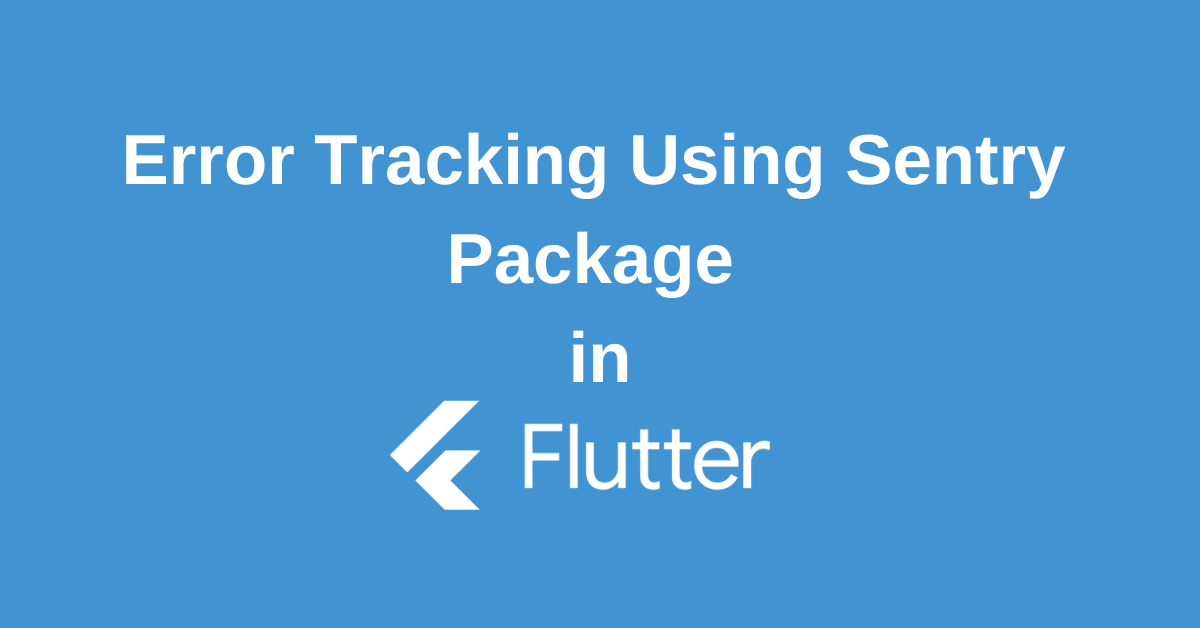Building robust Flutter applications demands a meticulous approach to error handling. While Flutter provides excellent tools for managing exceptions within the app, identifying and resolving issues in production can be a daunting task. This is where Flutter Sentry shines. By seamlessly integrating error tracking into your Flutter development workflow, Sentry offers a comprehensive solution to monitor, analyze, and rectify issues, ensuring a seamless user experience. In this post, we’ll delve into the intricacies of Flutter Sentry, exploring its features, benefits, and how to effectively implement it in your projects.
What is Flutter Sentry?
Flutter Sentry is a powerful tool that helps developers monitor and fix crashes in their Flutter applications. It’s a Flutter-specific implementation of the popular Sentry error tracking platform.
Key functionalities of Flutter Sentry:
- Automatic error reporting: It captures uncaught exceptions and sends them to the Sentry platform.
- Performance monitoring: Provides insights into app performance metrics.
- Detailed error information: Offers rich context about the error, including stack traces, device information, and user data.
- Issue grouping: Automatically groups similar errors together for efficient analysis.
- Integration with other tools: Can be integrated with other development tools and platforms for a comprehensive workflow.
Concept of Error Handling in Flutter Sentry
Before integrating Sentry, it’s essential to grasp Flutter’s error handling mechanisms. Sentry’s power lies in its ability to enhance this process.
At the core of Sentry’s error tracking is the concept of captureErrors and SentryCaptureException. These tools allow you to meticulously record and send error details to the Sentry platform. By leveraging the Sentry SDK, you can easily integrate error reporting into your Flutter app, transforming the way you handle and analyze crashes.
For example, here’s a simple Dart code snippet showing how Sentry CaptureException works:
try {
aMethodThatMightFail();
} catch (exception, stackTrace) {
await Sentry.captureException(
exception,
stackTrace: stackTrace,
);
}The Sentry.captureException function is a crucial component in your Flutter app’s error handling strategy. When a potential issue arises within your code, this function acts as a safety net. It captures any exceptions that occur and sends detailed information about them to the Sentry platform. By incorporating this function into your project, you create a robust system for recording and analyzing errors.
Every time an exception is encountered, Sentry diligently logs comprehensive data, including the error type, stack trace, and other relevant details. This information is then accessible on your Sentry dashboard, providing invaluable insights into the root causes of issues.
Dive into Flutter Sentry Implementation
Ready to enhance your Flutter app’s reliability? Integrating Flutter Sentry is a straightforward process that starts with adding the sentry_flutter package to your project. By incorporating this powerful tool, you’ll gain access to robust error tracking and performance monitoring capabilities, empowering you to build more stable and efficient applications.
Initialize the Sentry SDK using the init function in the main method:
import 'package:flutter/widgets.dart';
import 'package:sentry_flutter/sentry_flutter.dart';
Future<void> main() async {
await SentryFlutter.init(
(options) {
options.dsn = '<https://<key>@sentry.io/><project>';
},
appRunner: () => runApp(MyApp()),
);
}This code block includes the key and project value to connect your app to the correct Sentry project where all errors and events data are recorded.
For accurate error reporting, uploading debug symbols is essential. These symbols help map your minified code back to its original state, providing valuable insights into error locations. Sentry’s sentry-cli tool can be used to efficiently upload these symbols and source maps.
Once you’ve configured your project and uploaded the necessary symbols, you’re ready to start capturing errors. Flutter Sentry will diligently collect error data, making it easier for you to identify and resolve issues in your app.
Conclusion
Incorporating Flutter Sentry into your development process is a strategic move towards building more reliable and resilient applications. By providing invaluable insights into error patterns, user behavior, and performance metrics, Sentry empowers developers to proactively address issues and enhance user satisfaction. As the Flutter ecosystem continues to grow, leveraging tools like Sentry becomes increasingly essential for maintaining a high-quality app. By effectively utilizing Flutter Sentry, you’re not just tracking errors; you’re investing in the long-term success of your application.
Wanna Level up Your Flutter game? Then check out our ebook The Complete Guide to Flutter Developement where we teach you how to build production grade cross platform apps from scratch.Do check it out to completely Master Flutter framework from basic to advanced level.

